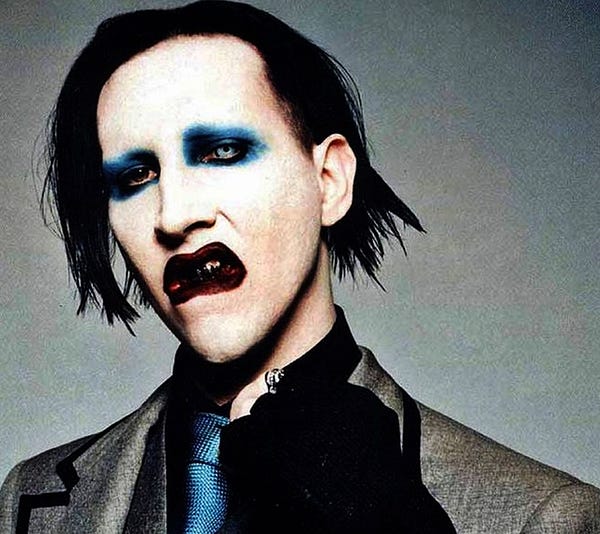There’s a restaurant I used to go to as a kid. Well actually, my parents used to take me and my brother there. It was a special treat while on vacation. The waitress would often squeeze into our booth to take our order. With my big eyes I’d order an insane amount of food and, pre-food coma, I’d find myself sliding down the leather seats of our booth. The bizarre thing is that although we went for the burgers and shakes, most people went for a completely different reason.
The spot is called Ed Debevics. It’s known as an angry burger joint with snarky servers. The short order business believes that, “If you like what you’re eatin’, order more. If you don’t there’s the door.” It’s not a spot for everybody, but if you see the charm in being waited on with a ‘side order of sass’ — then this is the spot for you.
Today, more than ever it’s important to be polarising. We want super extra chunky salsa, ultra high definition TV, self-parking hybrid vehicles, algorithmically-driven music playlists, culty soul-soaking spin classes, and sugar-free kombucha. The point from a marketeer’s stance, is to go narrow and ensure you cater to a very specific audience. The focus for leading brands has always been on uniqueness, differentiation — and owning a niche.
The world of work has changed such that we’re now all our own brands too.
When it comes to distinguishing yourself, it’s advantageous to be polarising. You can’t be all things to all people, so best you be something special to a targeted group.
Sodas and Salad Dressings
At one point in time, there was just one Coca-Cola drink. The original recipe. Now you can choose among 127 flavors in their Freestyle Machine. In their portfolio of drinks, numbering well over 3,500 — if you were to try one a day it would take you over 9 years to try them all.

Back in the days of the Babylonians, they used oil and vinegar to dress greens. Today, if you hop into any American supermarket you face a daunting choice among more than 175 salad dressings. And head over to the toothpaste section and you’re facing 27 varieties of toothpaste, and that’s just from the Crest brand alone. Let’s face it, from these examples it seems that we’re really starting to lose the plot.
Psychology Professor Barry Schwartz sees the world we live in as an endless array of choices. Option overload, or the paradox of choice, can be really fatiguing. But after all is said and done, it’s what most of us want. Increased choice means we can select that product that was designed (or at least convince ourselves it was made) ‘just for me.’
Bad Boys and Purple Cows
Louis C.K.’s comedy is not everybody’s cup of tea. And after his admission of sexual misconduct, he’s not really anybody’s brew these days. But like many comedians before him (Andy Kaufman, Richard Pryor or Lenny Brace to name a few) the notorious ones are almost always divisive. The more outlandish they are, the better.

Likewise with musicians, the more controversial, the better. From KISS to Kanye West, from Madonna to Marilyn Manson — if they cause a big stir that’s a good thing. Seth Godin refers to this phenomenon as the purple cow. That is, no one remarks about a regular brown cow, but a purple one? Now that’s something to talk about. That’s remarkable.
And so it goes as it concerns you or your business. Standing out from the crowd requires conviction, a discerning eye, and courage. Like an army that is invading enemy territory, by being bold — you are dead set on taking over the beachhead. This strategy becomes the foundation on which you build your brand.
Brand You
When author Ryan Holiday released his book Trust Me, I’m Lying: Confessions of a Media Manipulator, he knew precisely who he was writing for. His target audience were media types and publicists, and in particular, aspiring social media workers. By giving away his secrets (through a confession of his own role in manipulating the media system), he put himself in a dubious position. Holiday was also willing to go the distance through a series of real-time stunts, just to prove the concepts set out in his book.

Holiday then signed up for a service that matches journalists with sources, and — knowing little or nothing on a given topic — was able to get his own quotes into several publications including the New York Times. The point was to demonstrate that anybody can be the “expert”. It became a big story itself and remained in the news cycle for weeks helping to promote his book. This was just one of several tactics that helped prove his point to his audience: anyone can manipulate the media if you’re crafty and willing to take risks. The net result was that his existing fans became more loyal and his new readers became sure-fire converts.
Fortunately, all of this niche carving is good news. First, you need to find out where your target audience hangs out, then you have to devise the best way to reach them. And it’s not that you have to be conniving or pull some Ryan Holiday or Kim Kardashian-esque type trick.
The trick is to remain authentic. There is only one of you after all. We could all do well to celebrate this truism, and follow the advice of Oscar Wilde: “Be yourself, everybody else is taken.”
This article first appeared at Inc.com

